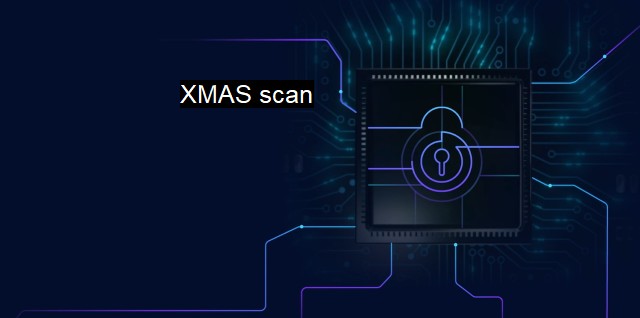What is XMAS scan?
XMAS Scan: Unwrapping Network Vulnerabilities with the 'X Probe' Cybersecurity Technique
The term "XMAS scan" refers to a technique used in computer security. Particularly within the sphere of network security, various scanning methodologies help identify vulnerabilities that could potentially conceivably be exploited by threat actors. Amongst these, the "XMAS scan" is one type of port scanning method which is designed to manipulate the flags inside the TCP (Transmission Control Protocol) headers, aimed at causing varied responses to further ease the scanning process. The name XMAS scan typically refers to a Christmas tree packet, one configured with the FIN, URG, and PUSH flags set.A more technical understanding of XMAS scan requires an understanding of TCP/IP stack that underpins much of the Internet's communication protocols. TCP, a primary protocol in this stack, facilitates reliable, ordered, and error-checked data delivery between applications running on hosts located in an IP network. TCP communications comprise a series of packets, each having a fin, syn, ack, psh, urg, and rst flag. In a typical and legitimate TCP communication, these flags are turned on and off to manage different aspects of the connection.
In an XMAS scan, the scan packet activating several TCP flags simultaneously (hence suggestive of a lit Christmas tree) can provide valuable information about the target network or system, depending on how that system responds. The common tools like Nmap use this approach, setting 'fin,' 'urg,' 'push,' 'send' flags and remaining inactive for ’syn,’ 'ack,' and ’rst.' If the port is closed, then per specification, the remote host should send back a packet with 'rst' flag set. But if the port is open, then there is no response which indicates that some service is listening at the port.
The XMAS scan has several distinct advantages for those looking to assess network vulnerabilities. Out of which its stealthy nature steals the show. Many basic intrusion detection systems may not pick up on an XMAS scan amongst the flow of regular network traffic as it somewhat obscures its identity by not abiding by general standard protocol.
Critically, the response to an XMAS scan is not universally the same, only those systems actually fully compliant with the complexities of TCP/IP protocol. Due to irregularity in TCP/IP stack implementation, this technique may lead to unreliable results while testing the non-compliant systems. additional complexities like dealing with stateful systems and discerning between open and filtered ports make it a complex scanning method.
In context with cybersecurity and antivirus software, frequent scanning for vulnerabilities and weaknesses is crucial to maintain robust network and application security. Anti-virus software often already accounts for well-known scans like the XMAS scan, with firewalls equipped to detect and consequently block such non-standard, potentially suspicious traffic. Yet, this method has not become utterly inactive due to the ignorance of some organizations about securing their systems against such possible actions.
The XMAS scan is an advanced technique primarily employed by network administrators and malicious actors for evaluation and exploitation respectively, although it carries both potential advantages and limitations. Target systems can make these scans less effective by configuring their firewalls to treat packets with specific combinations of flags as threats. In modern cybersecurity practice, knowledge of methods like the XMAS scan and tightening security measures to counter these is equally crucial.

XMAS scan FAQs
What is Xmas scan in cybersecurity?
Xmas scan is a type of port scan used to identify open ports on a system. It is also known as a Christmas tree scan because it sets several TCP flags high to resemble a lit-up Christmas tree. It is often used by attackers to identify potential vulnerabilities in a system.How does Xmas scan work?
Xmas scan sends packets to a target system, with the TCP flags FIN, URG, and PUSH set to 1. If a port is open, the system will respond with a packet that has the RST flag set. If no response is received, the port is likely closed or filtered.Can Xmas scan be used for defensive purposes?
Yes, Xmas scan can be used for defensive purposes as well. Security professionals can use Xmas scan to test their systems for vulnerabilities and identify any potential attack vectors. By identifying open ports, security teams can then take steps to secure them and prevent attackers from exploiting them.How can I protect my system from Xmas scan attacks?
One way to protect against Xmas scan attacks is to use a firewall to filter incoming traffic and block any packets with the TCP flags FIN, URG, and PUSH set to 1. Additionally, keeping your system up-to-date with security patches and implementing strong authentication measures can help prevent attackers from exploiting any vulnerabilities in your system.| | A | | | B | | | C | | | D | | | E | | | F | | | G | | | H | | | I | | | J | | | K | | | L | | | M | |
| | N | | | O | | | P | | | Q | | | R | | | S | | | T | | | U | | | V | | | W | | | X | | | Y | | | Z | |
| | 1 | | | 2 | | | 3 | | | 4 | | | 7 | | | 8 | | |||||||